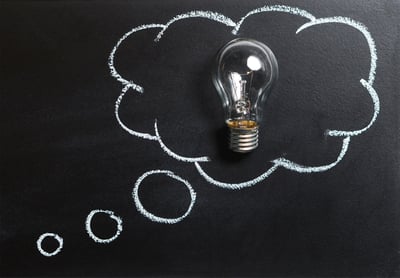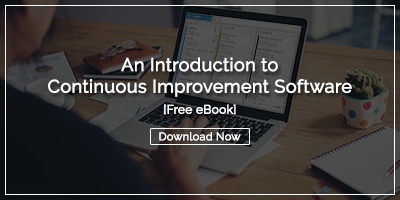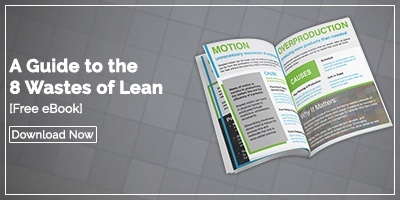 Lean methodology is a systematic approach to process improvement that focuses on eliminating waste and maximizing customer value through continuous improvement and respect for people. Originally developed by Toyota after WWII, Lean has evolved into a globally-adopted framework used across manufacturing, healthcare, software development, and service industries to increase efficiency, reduce costs, and empower employees to drive operational excellence.
Lean methodology is a systematic approach to process improvement that focuses on eliminating waste and maximizing customer value through continuous improvement and respect for people. Originally developed by Toyota after WWII, Lean has evolved into a globally-adopted framework used across manufacturing, healthcare, software development, and service industries to increase efficiency, reduce costs, and empower employees to drive operational excellence.
What Are the Origins of Lean Methodology?
The Lean methodology is an evolution of the Toyota Production System that the Japanese automaker implemented following World War II to improve the efficiency and flexibility of its manufacturing. Two important books, The Machine That Changed the World (1990) by James P. Womack, Daniel Roos, and Daniel T. Jone and Lean Thinking (1996) by James P. Womack and Daniel T. Jones, outlined the structure and principles for the Lean method. While Lean started in manufacturing, it now applies to virtually every industry:
- Logistics and distribution
- Healthcare and hospitals
- Software development and IT
- Construction and maintenance
- Retail and e-commerce
- Higher education
- Service industries
What Are the Two Foundational Concepts of Lean?
Two guiding concepts are the heart of the Lean methodology. An organization can not practice Lean without embracing them both.
1. Respect for People
Lean thinkers recognize that the best ideas often come from people directly responsible for producing the product or providing the services. So they turn top-down management on its head and give those closest to the product or the customer an equal voice.
One essential Lean practice involves managers going to the "Gemba" or the place where the work gets done to see workspace conditions and process activities first hand, allowing frontline workers to share insights and answer questions. This process often results in opportunities to improve.
Another way that Lean organizations demonstrate respect for people is by giving them the tools and training they need to be successful. Lean leaders take the time to ensure that everyone understands the techniques that the organization will use to implement, manage, and report on improvement work. In addition, they invest in training, software, and other necessary resources to achieve operational excellence.
2. Continuous Improvement
Lean leaders believe that processes can constantly be improved and that improvement is a daily activity that is the responsibility of everyone in the organization. The structure is applied with an improvement cycle such as PDSA (Plan, Do, Study, Act) or DMAIC (Define, Measure, Analyze, Improve, Control.) Often continuous improvement software is used to organize, measure, and report on Lean activities.
What Are the Five Core Principles of Lean Methodology?
Womack and Jones laid out five core principles for the Lean methodology, giving leaders a framework under which to operate.
1. What is Value in Lean Methodology?
Lean starts by understanding what value the customer ascribes to the offered product or services. The customer, not the producer, defines all value. The price is based on the customer's willingness to pay, which determines the maximum allowable cost to produce the product. The organization then focuses on eliminating waste to deliver what the customer wants with the highest possible margins.
2. What is the Value Stream?
The value stream represents the sum of the product's entire life-cycle from research and development through to the customer's use of the product. A deep understanding of the value stream is necessary to achieve maximum value and eliminate waste. Every process is examined to see what value it adds. Processes, features, and materials that don't add value are removed. Value stream mapping is a frequently used technique in Lean organizations.
3. What Does Flow Mean in Lean?
The value stream should flow seamlessly without interruption or delay. The Lean method seeks to have every process entirely in sync with every other. A smooth process flow is one of the conditions necessary for just-in-time production.
4. How Does Pull Work in Lean Systems?
What makes flow possible is the idea of pull. In Lean, pull means ensuring that nothing is made before it is needed. Instead of creating work based on a forecast and schedule, in a Lean organization, nothing is made until the internal or external customer orders it.
|
Traditional Push System |
Lean Pull System |
|
Production based on forecasts |
Production based on actual orders |
|
Work created on schedule |
Work created on demand |
|
Long delivery cycles |
Shorter delivery cycles |
|
Less flexibility |
High flexibility |
|
Exceess inventory |
Minimal inventory |
Kanban boards are a common visual cue that organizations use to communicate what's needed at each step, making pull systems practical and effective.
5. What is Perfection in Lean?
In line with the guiding concept of continuous improvement, Lean practitioners exercise a relentless pursuit of perfection. They dig deeper into the root causes of quality problems and waste, apply more rigorous measurements, and make incremental changes more effectively than their less successful competitors.
What Are the 8 Wastes in Lean?
Perhaps the Lean methodology is most often associated with the goal of eliminating waste. The Lean framework lays out eight distinct types of waste (often remembered by the acronym DOWNTIME) that should be identified, minimized, or eliminated. Everything that does not add value that the customer would be willing to pay for is considered a waste.
1. Defects
-
What it is: Quality errors and rework
-
Impact: Wastes materials, time, and human effort
-
Solution: Implement quality control systems and root cause analysis
2. Overproduction
-
What it is: Producing more than needed or before it's needed
-
Impact: Creates excess inventory, requires extra storage, ties up capital
-
Solution: Implement pull systems and just-in-time production
3. Waiting
-
What it is: Idle time when people or equipment wait for work
-
Impact: Interrupts flow, reduces productivity, increases costs
-
Solution: Balance workloads and synchronize processes
4. Non-Utilized Talent (Human Potential)
-
What it is: Underutilizing people's skills, capabilities, and ideas
-
Impact: Arguably the most damaging waste; stifles innovation
-
Solution: Empower employees, encourage idea submission, provide training
5. Transportation
-
What it is: Unnecessary movement of materials that doesn't add value
-
Impact: Increases handling time, risk of damage, and costs
-
Solution: Optimize layout and material flow paths
6. Inventory
-
What it is: Excess materials or products not needed immediately
-
Impact: Requires storage space, management, and loses value over time
-
Solution: Implement pull systems and reduce batch sizes
7. Motion
-
What it is: Unnecessary movements of people, materials, or machines
-
Impact: Wastes time and energy, increases fatigue
-
Solution: Optimize workstation design and standard work procedures
8. Extra Processing (Over-processing)
-
What it is: Adding more work, features, or cost than customers value
-
Impact: Wastes resources without increasing value
-
Solution: Focus on customer requirements and eliminate gold-plating
What Are the Key Benefits of Implementing Lean Methodology?
Lean organizations benefit from the approach in several important ways. While there is no "right" or "wrong" way to improve operations, Lean has several compelling advantages.
How Lean Provides Structure
Lean helps organizations manage more improvement projects and complete them faster by providing a framework for improvement projects. Lean provides a common language for operations improvement and makes it easier for cross-functional teams to work together. Several Lean tools, including PDSA and Kanban boards, are often used to organize and visualize improvement work. Lean software supports all Lean initiatives.
Why Lean Increases Employee Engagement
One of the most potent aspects of Lean is the idea that the people who operate processes are the ones who should be empowered and expected to improve them. When employees can contribute opportunities for improvement and participate in the improvement cycle, they become emotionally invested in the outcome, and engagement increases.
How Lean Builds Organizational Knowledge
Lean organizations strive to learn from every improvement project so that the team gains tribal knowledge over time. Lean software is helpful in this quest because it becomes the repository of that knowledge. Team members can search for similar projects that have been completed in the past and take away ideas of what to do and mistakes to avoid.
What Lean Measurement Provides
Before an improvement is attempted within the Lean method, the baseline is documented. This allows the team to understand exactly how much waste was eliminated and place a value on the improvement. Measuring the impact of Lean secures further investment in improvement work, increases team morale, and highlights the difference between actual improvement and change without effect.
What Software Capabilities Support Lean Implementation?
Implementing Lean is no small task, especially if it is new for your organization. However, selecting a Lean software platform is an excellent way to bolster your efforts, unite the team, and build on each success. The most crucial features of Lean software are designed to support four critical functions:
Capturing Opportunities for Improvement
Because improvement in Lean is a bottom-up affair, all employees are potential sources of ideas for positive change. Cloud-based Lean software allows people to submit opportunities from wherever they happen to be any time of the day. In addition, employees can search the database to see if the improvement has already been proposed to avoid duplication.
Implementing Improvements
Capturing ideas is an excellent first step, but it is only the beginning. Improvement management software includes notifications so that when an opportunity is entered, the right leaders are notified about it and can decide whether to take action. As the project commences, active alerts help ensure that tasks are completed and that someone is aware of progress stalls.
Measuring Impact
We mentioned the importance of measurement in the Lean method. Software is ideal for capturing the baseline process results, comparing them to the post-change results, and assigning finical or other impact measurements to the improvement.
Sharing Knowledge
To support the idea of continual learning, Lean software becomes the home for notes, documents, control charts, fishbone diagrams, and other artifacts of improvement. Whether successful or not, every completed project makes the organization more innovative. The best solutions also make it easy to broadcast success so that engaged employees are recognized and acknowledged for their efforts.
How Do You Get Started with Lean Methodology?
Step-by-step approach:
-
Educate leadership on Lean principles and commitment required
-
Select pilot area with measurable pain points
-
Train core team on Lean tools and techniques
-
Implement improvement software to support initiatives
-
Conduct value stream mapping to identify waste
-
Launch small projects with quick wins
-
Measure and celebrate early successes
-
Expand gradually to other departments
-
Establish continuous improvement culture through ongoing training
-
Refine and scale based on lessons learned
Frequently Asked Questions About Lean Methodology
What's the difference between Lean and Six Sigma?
Lean focuses on eliminating waste and improving flow, while Six Sigma focuses on reducing variation and defects through statistical analysis. Many organizations combine both approaches into Lean Six Sigma to leverage complementary strengths.
Can small businesses benefit from Lean?
Absolutely. Lean principles scale to organizations of any size. Small businesses often see faster implementation and more dramatic results because they can adapt more quickly and have fewer layers of bureaucracy.
What industries use Lean methodology?
Lean has been successfully applied in manufacturing, healthcare, software development, construction, logistics, retail, education, government, financial services, and virtually every other sector.
Do I need expensive consultants to implement Lean?
While consultants can accelerate implementation, many organizations successfully adopt Lean through internal training, books, online resources, and improvement software. The key is commitment from leadership and willingness to learn.
What's the role of technology in Lean?
Modern continuous improvement software platforms are essential for scaling Lean beyond small pilot projects. They provide structure, measurement, communication, and knowledge management that make enterprise-wide Lean sustainable.
How do you maintain momentum with Lean initiatives?
Sustained momentum requires: visible leadership support, regular measurement and celebration of wins, ongoing training, dedicated resources, improvement software to track progress, and making continuous improvement part of everyone's job description.

![[Watch Now] How to Leverage Lean for Long-Term Success](https://no-cache.hubspot.com/cta/default/326641/eb5ac7b8-b040-48b7-810e-1589561ffff9.png)



Add a Comment